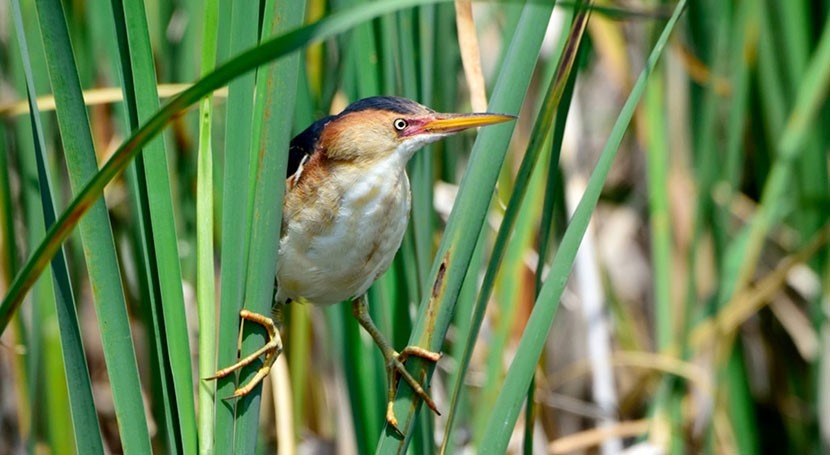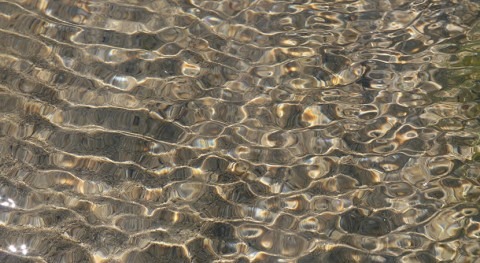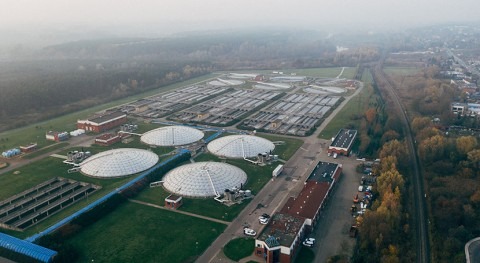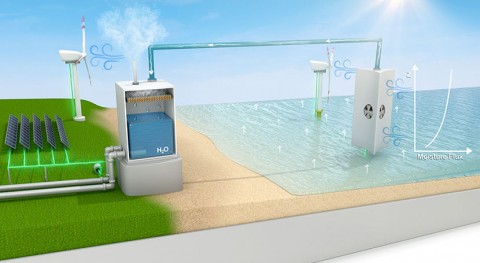A three-year study in northeastern Illinois and northwestern Indiana found that – even at small scales – emergent wetlands or ponds support many wetland bird species. The study also found that, at least in the years surveyed, the level of urbanization had little effect on most of the studied species’ use of such sites, provided the right kinds of habitat were available.
The new findings are reported in the journal Ecosphere.

Illinois Natural History Survey ornithologist Anastasia Rahlin and her colleagues found that several wetland bird species make use of even small Chicago-area wetlands. Photo by Fred Zwicky
Emergent wetlands are shallow-water sites usually found along the banks of rivers, ponds or bogs, where plants like cattails, sedges and rushes grow. Many wetland birds rely on emergent wetlands for shelter, nesting material and food – in the form of fish, reptiles, algae and invertebrates like worms or crayfish. Wetland birds differ in their habitat needs, however, said Illinois Natural History Survey ornithologist Anastasia Rahlin, who led the research in collaboration with Sarah Saunders, a quantitative ecologist with the National Audubon Society; and Stephanie Beilke, a senior conservation science manager with Audubon Great Lakes, which is based in Chicago.
For example, black-crowned night herons often hunt in low light at pond edges in early morning or at dusk, opportunistically foraging for fish, snakes or frogs, Rahlin said.
“Virginia rails nest on floating mats surrounded by dense, emergent vegetation and quietly pick their way along marsh edges and mud flats in search of insects, spiders, slugs and small fish,” she said. “Some of the 17 species we targeted, such as the marsh wren, are more vocal than others, and some, like rails, are difficult to spot,” she said.
The researchers wrote that wetland birds in North America “have experienced declines of approximately 22% since 1970. Due to the diversity of habitat requirements, life history strategies and food sources of wetland birds, it is likely that individual species will respond to landscape characteristics across a variety of spatial scales.”
Of the 17 wetland bird species targeted in the survey, 10 species had enough detections for deeper analysis, the team reported.
“Because of their elusive behavior, many wetland bird species are difficult to detect, limiting our ability to estimate their relationships with landscape characteristics,” Beilke said. “But being able to do this for 10 species is a great step, and with more years of data collection, we will be able to add more species to this type of analysis.”
“We looked at what factors had an effect on each species’ presence at each site,” Rahlin said. “We used occupancy models to determine if the proportion of different wetland types influenced whether the birds were using that particular wetland or not.”
The researchers determined which species made use of wetlands of different sizes and whether the proportion of urbanization influenced their presence or absence at each site. They also examined the role of proximity to Lake Michigan.
“There are different wetland habitat types as you move toward the lake,” Rahlin said. “There are dune and swale wetlands, which are very different than inland wetlands, so we wanted to account for that as well.”
The majority of sites were not hydrologically connected to Lake Michigan, she said.
The analysis revealed that three species – the least bittern, common gallinule and swamp sparrow – were “sensitive to wetlands at large spatial scales,” Rahlin said. They were less likely to be seen in smaller wetlands, suggesting these birds would only make use of larger wetland sites.
Other wetland birds, including Virginia rails and soras, were more likely to be detected in smaller wetlands. These areas could be as small “as the footprint of a house,” Rahlin said.
“To me, it’s a hopeful message that yes, restoration does work and is important even in small urban wetlands,” she said.
Rahlin said she was surprised to see that a majority of species seemed to be unaffected by the degree of urbanization.
“Of the 10 species we modeled, we saw that the occupancy of pied-billed grebes and swamp sparrows was negatively affected as urbanization increased,” she said. The years surveyed were high-water years, however, and the pattern might change in drought years, she said.
A few of the species, including snowy egrets, American bitterns and yellow-headed blackbirds, were very rarely seen, suggesting that they must be studied on a larger scale to understand their habitat needs, Rahlin said.
“The amount of wetland habitat that’s available in Illinois is just vanishingly small,” she said. “More than 90% of wetland habitat in Illinois has been lost to development and conversion to agriculture.” This may lead wetland bird species to concentrate in any remaining wetlands. More research will be needed to see how successfully they’re breeding to ensure their continuing presence in the state.
To that end, the Audubon Great Lakes’ Marsh Bird Monitoring Hub is collecting and sharing wetland bird data with land managers and the public to promote wetlands restoration and maintenance in the region.


















